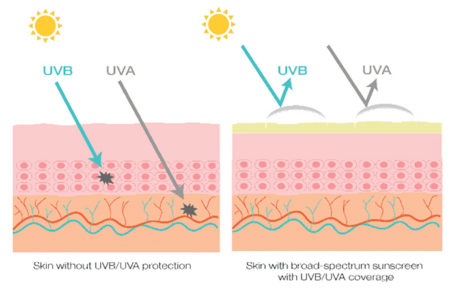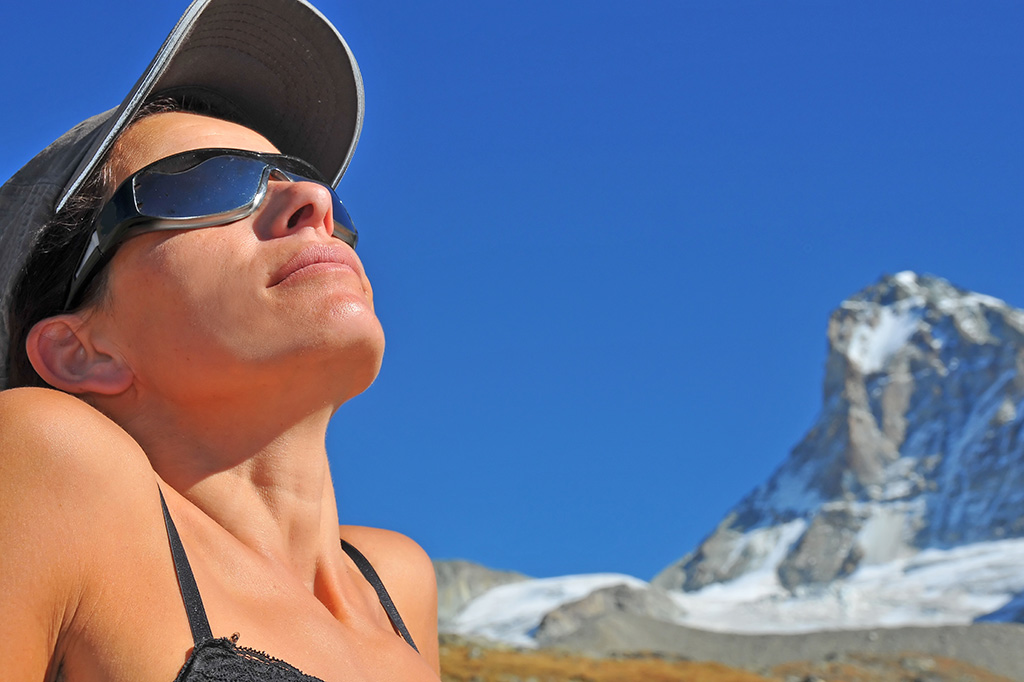Our muscles may (or may not) thank us for the multitude of outdoor activities in which we participate in the Wood River Valley, one member of our bodies less than pleased with the constant exposure to the nearly 6,000 feet at which we live is our skin.
Maintaining healthy skin at altitude takes vigilance and is important not just to stave off wrinkles, but also to prevent deadly skin cancers. According to the World Health Organization, the risk of skin cancer rises with altitude— for every 1,000-foot increase in elevation, ultraviolet radiation levels increase by 10 to 12 percent, which can lead to premature aging, as well as skin cancer. Taking extra care to protect oneself from the sun on hikes and during any outdoor activities is paramount to skin health in our mile-high town.
Caroline Hobbs is a board certified family nurse practitioner who has been working in dermatology at St. Luke’s Wood River Medical Center for the last three years. Prior to that she worked in Seattle hospitals for 14 years. “The 20 percent increase in UV exposure at our altitude leads to photoaging, which is premature aging of the skin from UV damage,” Hobbs said. “The UV exposure from both UVA and UVB radiations play a role in photoaging by damaging the elastin fibers and the extracellular matrix that composes our skin, which, ultimately, leads to increased wrinkles and loss of elasticity.” Aside from aging, Hobbs added, “UV radiation causes increased pigmentation, or lentigos, precancerous growths called actinic keratoses, and skin cancers, including basal and squamous cell carcinomas, and melanoma.”
Hobbs also says that due to the dry climate and low humidity in the Valley, it is essential to maintain proper hydration of skin, both through water intake and in using topical creams. “Key ingredients include ceramides and hyaluronic acid, which help maintain skin’s natural hydration,” she said. “Our skin needs to maintain adequate hydration to properly function as a barrier to protect us from skin cancers.”
 Hobbs’ tips for sun protection at altitude include sun avoidance, protective clothing and a broad-spectrum sunscreen with UVA/UVB coverage. She says to reapply every two hours, and perform monthly self-skin checks as well as annual full-skin exams. In addition, Hobbs stresses the importance of a well-balanced diet so that our skin gets the necessary vitamins (C and E) as well as carotenoids and ferulic acid, which are essential for maintaining healthy skin.
Hobbs’ tips for sun protection at altitude include sun avoidance, protective clothing and a broad-spectrum sunscreen with UVA/UVB coverage. She says to reapply every two hours, and perform monthly self-skin checks as well as annual full-skin exams. In addition, Hobbs stresses the importance of a well-balanced diet so that our skin gets the necessary vitamins (C and E) as well as carotenoids and ferulic acid, which are essential for maintaining healthy skin.
Mindy Pereira, local esthetician and owner of Skinsations, offered: “Living at high altitude is very hard on the skin, and nothing ages our skin faster than overexposure to the sun.” Pereira has lived in the Valley on and off since 1978. She has been a practicing esthetician for 15 years, providing customized facials, chemical peels and microdermabrasion treatments.
“Having regular facial treatments is as important for your skin as going to the gym is for keeping your body fit,” Pereira said. “I refer to facial treatments as aerobics for the skin. It increases oxygen in the skin, increases blood circulation in the tissue and helps with lymphatic drainage in the face and neck.”
Pereira recommends having treatments every four to six weeks and says that our skin needs daily nutrition and antioxidants from topical products, such as a Vitamin C serum to be applied under your moisturizer and sunscreen.
“At night, while we are sleeping, is when the skin repairs itself and cellular turnover occurs,” Pereira said. “So, never go to bed without cleansing your skin and applying plenty of moisture.” She recommends peptides with plant stem cells in serums under your nighttime moisturizer that will nourish the skin while you sleep and allow you to wake up with plump and hydrated skin.
Yes, you can achieve that “dewy look,” even in our harsh climate, and still enjoy the outdoors as long as you take care of your skin at altitude.
More Body & Soul: Skin Facts
Why elevation affects the risk of skin cancer
The higher the elevation, the more sunlight—including ultraviolet radiation, which causes skin cancer—reaches the ground, says Jennifer Lin, M.D., a dermatologist at Dana-Farber Cancer Institute’s Melanoma Treatment Center. Technically, the higher you are, the closer you are to the sun, with fewer protective layers of atmosphere above you. Colorado, for instance, has one of the highest melanoma rates in the country, likely due to its elevation.


